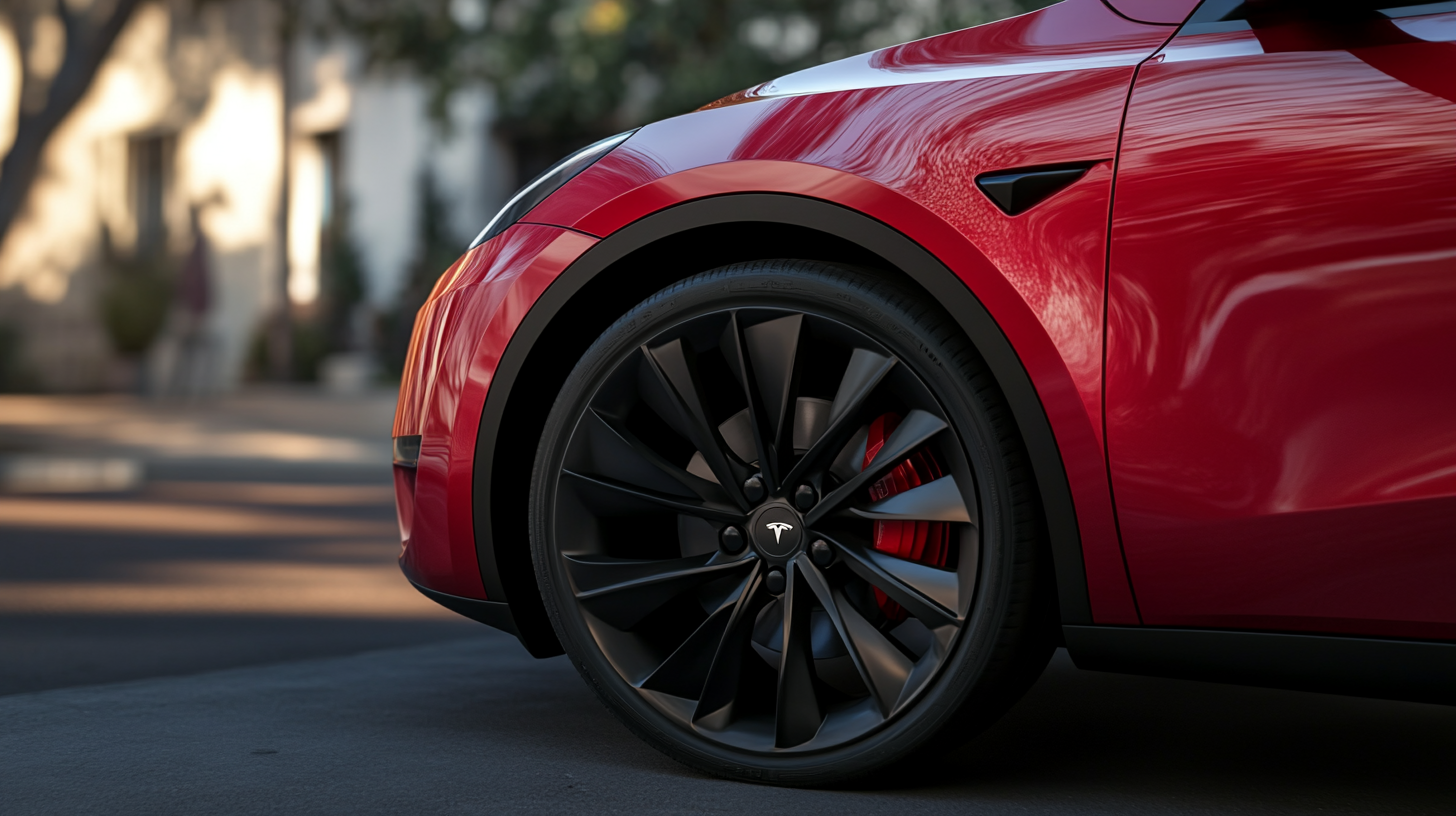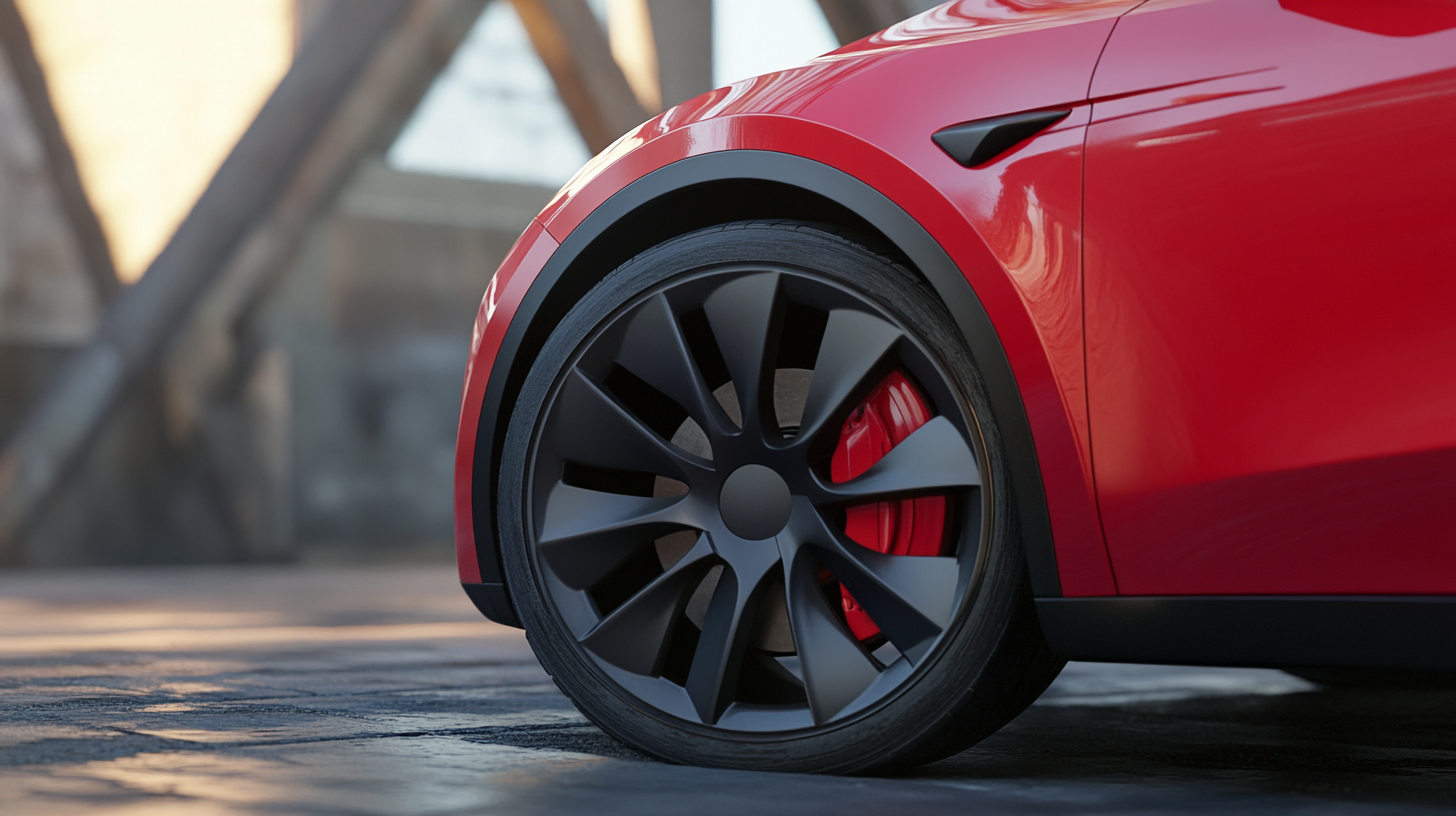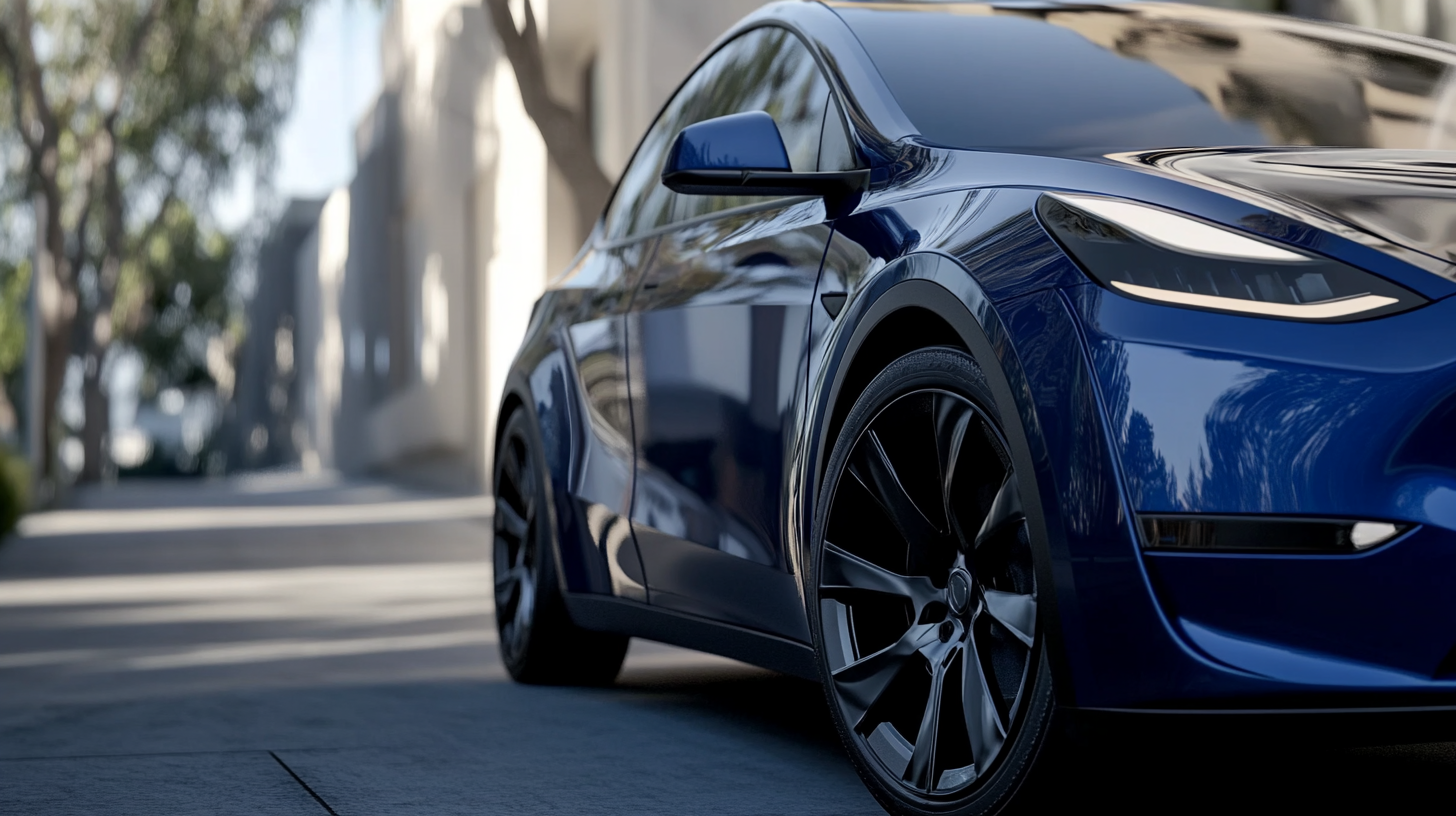As we look ahead to 2025, the automotive industry stands on the brink of significant transformation, with innovations in design and functionality at the forefront. Among the game-changing advancements are the anticipated developments in the Tesla Model Y Wheel Cover, which are set to redefine not only the aesthetics but also the performance of electric vehicles. This blog will explore the cutting-edge technologies and trends shaping these wheel covers, highlighting how Tesla's commitment to sustainability and efficiency could lead to improved aerodynamics and energy conservation. By examining expert predictions and design innovations, we aim to provide readers with valuable insights into how the Tesla Model Y Wheel Cover will influence industry standards and consumer expectations, paving the way for a new era in automotive design. Join us as we delve into the future of wheel covers and their pivotal role in enhancing the Tesla driving experience.

The future of Tesla Model Y wheel covers promises to make waves in industry trends, particularly in the realm of material efficiency. As manufacturers strive to innovate, the focus on lightweight and sustainable materials will become paramount. Advanced composites and recycled materials are anticipated to enhance performance while reducing the overall carbon footprint of electric vehicles. This aligns with the broader industry push towards sustainability and efficiency, mirroring trends seen in battery production where the demand for innovative materials is rising.
Moreover, the integration of smart technology in wheel cover designs can optimize aerodynamics, further improving the Model Y's energy efficiency. This reflects a growing trend in the electric vehicle sector, where thermal management and performance innovation are critical. Enhanced wheel covers could play a significant role in reducing drag and improving battery life, demonstrating how even the smallest components can impact overall vehicle performance. As automotive trends evolve, we can expect Tesla to lead the charge in redefining how wheel covers contribute to both efficiency and design aesthetics in the electric vehicle domain.
| Material Type | Weight (kg) | Cost per Unit ($) | Recycling Rate (%) | Durability (Years) |
|---|---|---|---|---|
| Aluminum | 5.5 | 80 | 90 | 15 |
| Plastic Composite | 3.2 | 50 | 70 | 10 |
| Carbon Fiber | 4.0 | 150 | 95 | 20 |
| Steel | 7.0 | 60 | 80 | 12 |
| Biodegradable Polymer | 2.5 | 40 | 85 | 8 |
The design of wheel covers plays a crucial role in enhancing the aerodynamics of electric vehicles (EVs) like the Tesla Model Y. As the automotive industry moves towards more sustainable solutions, aerodynamically efficient wheel covers are becoming vital for improving overall performance and extending range. By minimizing drag and channeling airflow effectively, innovative wheel cover designs can significantly influence how EVs navigate different driving conditions.
One key tip for designers is to focus on the balance between aesthetics and functionality. While visually appealing designs attract consumers, they should not compromise on aerodynamic efficiency. Implementing smooth, rounded shapes can help streamline airflow around the vehicle, reducing turbulence and enhancing stability at higher speeds.
Another important consideration is the material used for wheel covers. Lightweight materials not only reduce the overall mass of the vehicle but also enhance fuel efficiency. Using advanced composites that maintain strength while being lightweight can lead to improved performance metrics. As the focus shifts to greater sustainability, integrating recycled or eco-friendly materials into the wheel cover design will also resonate with environmentally conscious consumers.

The automotive industry is on the brink of a significant shift towards sustainability, particularly in response to rising consumer demand for eco-friendly practices. As we approach 2025, the market for sustainable materials and manufacturing processes is expected to expand tremendously. Notably, the global automotive paint market is projected to reach approximately $16.49 billion by 2033, driven by advancements in application technology and a growing emphasis on personalization and color preferences. This trend highlights the necessity for automakers to innovate not only in design but also in the materials they use.
Tips for manufacturers looking to embrace sustainability include exploring eco-friendly alternatives and focusing on circular economy principles. For instance, integrating sustainable plasticizers and recycled materials into production can significantly reduce environmental impact. Furthermore, the increasing utilization of mycelium-based products as a substitute for conventional materials represents a promising avenue for raw material sourcing, highlighting the potential of innovative solutions in addressing sustainability challenges.
As the industry evolves, it's imperative for companies to align with sustainability targets set by regulatory bodies. This means adopting greener practices not only in product design but also throughout the supply chain. Emphasizing material science advancements will play a critical role in this transition, fostering a future where automotive manufacturing is synonymous with sustainability.
This chart illustrates the projected adoption rates of various eco-friendly materials for wheel covers by 2025. The data reflects the increasing trend towards sustainable automotive manufacturing practices.
As the automotive industry continues to evolve, customization has emerged as a paramount trend among consumers. In particular, the Tesla Model Y wheel covers are at the forefront of this movement, with diverse styles and features that cater to a broad spectrum of preferences. Drivers are seeking not just functionality but also a personalized touch that reflects their individuality. With options ranging from sleek minimalist designs to bold, eye-catching patterns, Tesla is poised to meet the rising demand for unique wheel covers that enhance the visual appeal of their vehicles.
Moreover, the integration of innovative materials and technologies is revolutionizing wheel cover designs. Lightweight, durable options that improve aerodynamics and fuel efficiency are becoming increasingly popular. Features such as customizable colors and textures allow owners to express their style while also benefiting from enhanced performance. As we approach 2025, the Tesla Model Y is set to lead the charge in this area, serving as a model for other automakers to follow. The ongoing focus on customization in wheel covers exemplifies larger industry trends, underscoring the importance of personal expression in the modern automotive landscape.
The Tesla Model Y is poised to redefine industry standards in 2025, particularly with its innovative wheel cover designs. In a market saturated with electric vehicles, the Model Y maintains its edge by integrating aesthetic appeal with aerodynamics. This aspect not only enhances the vehicle's range but also sets a benchmark in the compact crossover segment, competing directly with models like the BYD Sealion 7 and others.
When comparing the Tesla Model Y's wheel covers with competitors, it becomes evident that Tesla focuses on streamlined designs that prioritize efficiency without sacrificing style. Meanwhile, rivals offer innovative features but often lack the same level of cohesion in design. Tips for potential buyers include considering how wheel cover designs can affect overall vehicle performance, as well as exploring customization options that enhance both functionality and appearance.
Moreover, as technology continues to evolve, exploring material innovations in wheel covers could lead to even better energy efficiency. Prospective owners should look for models that not only fit their personal style but also contribute positively to the vehicle's performance metrics. Keep an eye on how these advancements in wheel cover technology will influence the choices available in the market come 2025.

